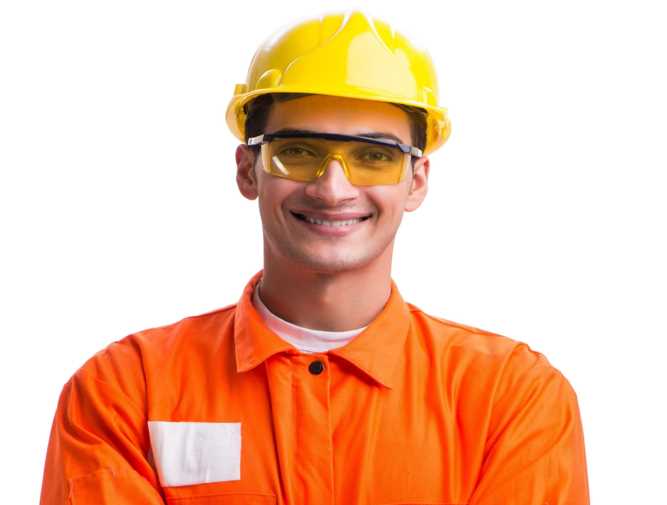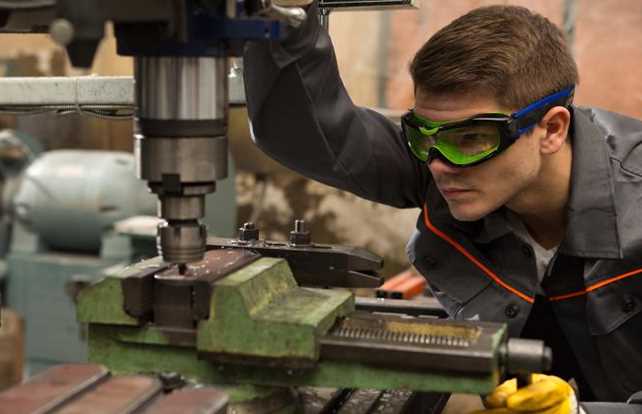The eyes are exposed to physical dangers, such as objects with sharp ends that could cause harm to the thin natural layer that protects the eye. This layer is so thin that it is easy for something as small as a fingernail to cause a scratch. It can lead to infection and even permanent damage to the eye.
There are several different types of work that usually require you to wear protective eyewear. Each type of work has risks that need to be considered when wearing eyewear. Some of the most common workers wearing protective eyewear are construction workers, factory workers, and doctors. A few different types of eyewear are designed specifically for these types of jobs.
Workers often wear eyewear specifically designed for their task to reduce the risk of physical harm to the eyes. A few different types of eyewear are designed specifically for these types of jobs.
Construction workers, for example, often wear safety glasses that protect them from objects that could cause harm to the thin natural layer that protects the eye. Factory workers may wear safety goggles to protect them from chemicals and other dangerous objects that could harm them.
Page Contents
Construction sites

Construction sites have many extremely dusty particles that can cause danger in many ways. Mandatory use of safety equipment help protect workers, but eye protection is also essential for the best defense against workplace hazards. Safety equipment and eye protection are essential when working on construction sites.
Ensure you wear appropriate prescription safety glasses, including a hard hat, safety glasses, and a dust mask. Always wear eye protection when working with building and construction materials.
Healthcare
Healthcare workers are at high risk of catching bacterial infections that can harm the eyes. Doctors, who work with the open wounds of patients, always wear protective eyewear as a rule, but this has not spread to other health care workers, even those who work with infectious diseases.
Most health care workers, who are required to wear protective eyewear, do not do so. Despite the dangers, few hospitals require their employees to wear protective eyewear. The lack of eyewear not only puts health care professionals at risk for infection but also for injury. Eye protection and prescription safety glasses are essential in preventing these injuries.
Mechanics

Most mechanics rely on their eyelids for protection. When a garage is full of sparks flying from cutting torches and airborne pieces of metal launched from bench grinders, it’s essential to wear prescription safety glasses and a face shield to prevent yourself from getting injured.
Workers’ eyes risk being impacted by tools, machinery, or materials. Workshops can be full of dust and other particles that can be dangerous when in contact with the eyes. Mechanics often require eye protection and safety glasses to avoid potentially harmful debris or pieces of metal that could fly into their eyes.
Production industry
Eye injuries are prevalent in the production industry. This is because many potential hazards can cause serious injury to the eye. Eye protection is a must in any manufacturing facility. Workers’ eyes are at risk of impact by tools, machinery, and materials. Factories can be full of dust and other particles that can be dangerous when in contact with the eyes.
This can cause injuries such as cataracts, glaucoma, and even blindness. The eyes of workers in manufacturing facilities may be at risk of getting harmed by hazardous machinery or materials. Factories are usually full of dust and other particles that can be dangerous when in contact with the eyes. These particles can cause irreversible damage to the eyes if they are breathed in or in contact with them.
Conclusion
All hazards in the workplace can lead to potential risks to eye health. Falls and flying debris can cause serious injuries, while smaller particles like chips and dust can cause headaches and other symptoms. Efforts should be made to reduce these hazards and adjust lighting and ventilation to better suit worker health. To reduce the hazards in the workplace, all areas should be assessed for potential risks to eye health. Lighting should be adapted in such a way that better suit worker health and wellbeing.
Safety glasses and other forms of eye protection are required in many industries, including production, construction, and mining. These industries require employees to wear safety glasses to protect their eyes from flying debris, chemicals, or other potential hazards. This should be followed in every workplace for better results.

Leave a Reply